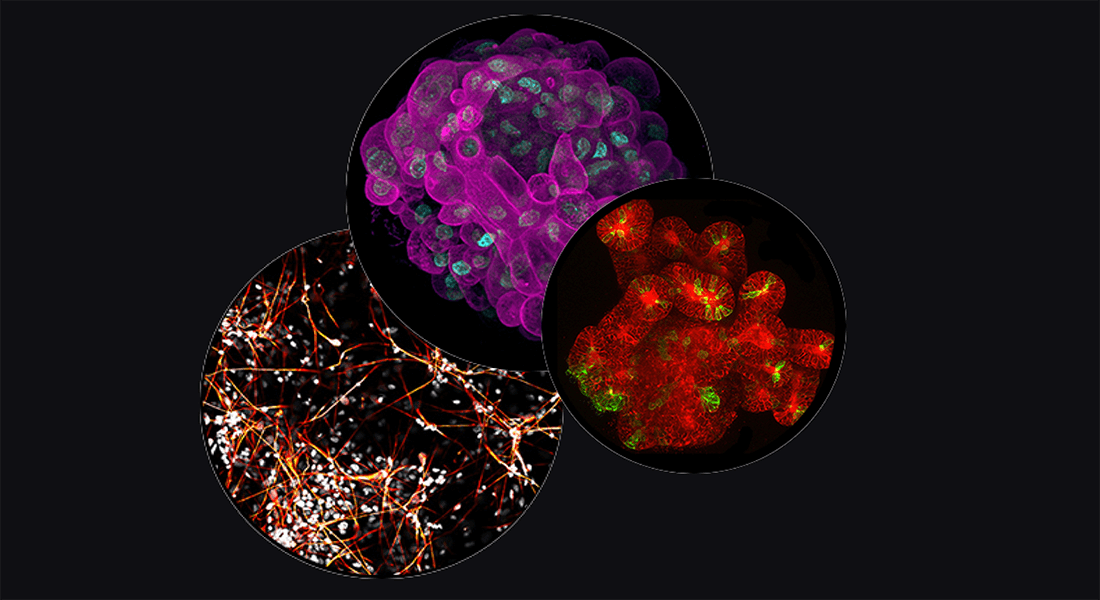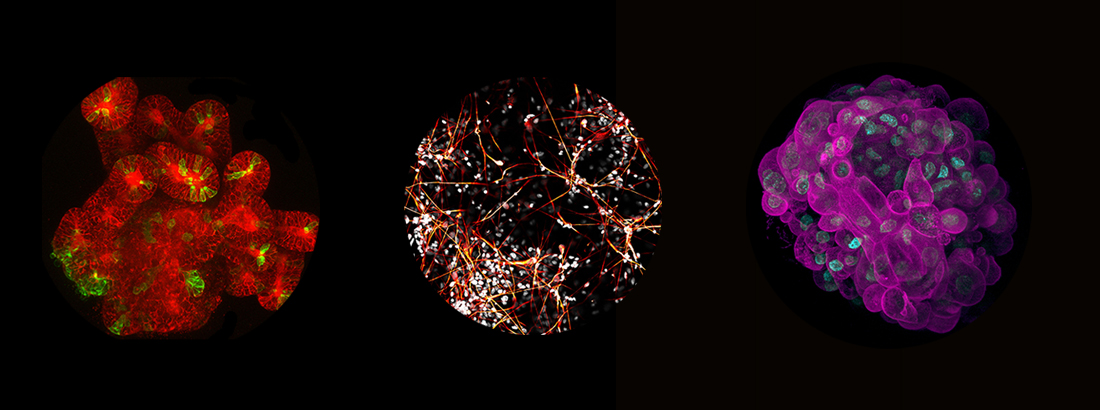
Kim Bak Jensen
Professor

L-R: Intestinal organoid (Martti Maimets), Neuronal culture (Arun Thiruvalluvan), Nasal organoid (Ana Bustos Muñoz)
The Center for Stem Cell-based Disease Modelling and Drug Screening (StemScreen) facilitates image-based high-content screens of organoids (”mini organs” built from stem cells) and seeks to identify lead compounds for drug discovery. StemScreen has potential to cut the costs of developing new drug treatments for difficult-to-treat diseases, while also reducing animal experimentation.
StemScreen is a Danish academic-industrial partnership including instrumentation, expertise and a research network, funded by the Innovation Fund Denmark (IFD).
The facility is capable of end-point or live-cell high-content and high-throughput screening of stem cell-based 3D models.
The CV8000 is an inverted high-speed microlens-enhanced dual spinning-disk confocal microscope fitted with four sCMOS cameras with superior sensitivity for gentle and high-speed imaging, allowing acquisition of up to four fluorescent colours in a single exposure.
For details of the instrumentation at the StemScreen facility, see StemScreen’s technical guide (contact stemscreen@sund.ku.dk to request a copy).
High-Content Screening (HCS) is a drug discovery strategy that characterizes phenotypic changes among or within cell populations (e.g. organoids) through visual analysis of the effects of a library of small molecules.
For more information about high-content screening strategy, see StemScreen’s technical guide (contact stemscreen@sund.ku.dk to request a copy).
Model development and condition testing should be performed prior to moving to the StemScreen facility.
All users of the StemScreen facility must be working on an approved StemScreen project. Moreover, users must complete introductory training before they can access the facility independently.
Any researcher with a promising proof-of-concept project that has potential to generate value can apply to use the StemScreen facility.
Submit your application by emailing a 2-page pdf (maximum 1000 words) to stemscreen@sund.ku.dk.
Project applications are prioritized by the StemScreen steering committee. The committee may approach key stakeholders for input. Applicants can expect to receive an answer within 3 months after their submission date.
Successful project applications gain access to the StemScreen facility and expertise, but no funding is awarded.
StemScreen is a partnership between two Danish biotech firms – Bioneer A/S and Synklino A/S – and the University of Copenhagen. StemScreen is led by Professor Kim Bak Jensen (Novo Nordisk Foundation Center for Stem Cell Medicine - reNEW, University of Copenhagen).
The StemScreen research network includes nine proof-of-concept (PoC) projects led by the following scientists from the University of Copenhagen (UCPH), Synklino A/S and Bioneer A/S.
The StemScreen steering committee (Christian Clausen, Melissa Little, Rasmus P. Clausen, Mette Rosenkilde, Steen B. Mortensen) is responsible for ratifying the inclusion of new projects, as well as guiding and prioritizing projects within StemScreen.


Screening and Imaging Specialist: Jonas Viswalingam Bagge
Project Manager: Amelia Green
Contact: stemscreen@sund.ku.dk
Any publication that includes data generated at StemScreen must include the following acknowledgement:
StemScreen is funded by the Innovation Fund Denmark (IFD) under File No. 2078-00002B